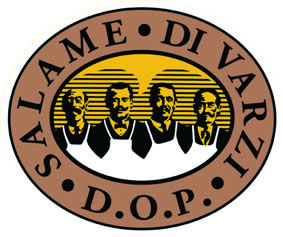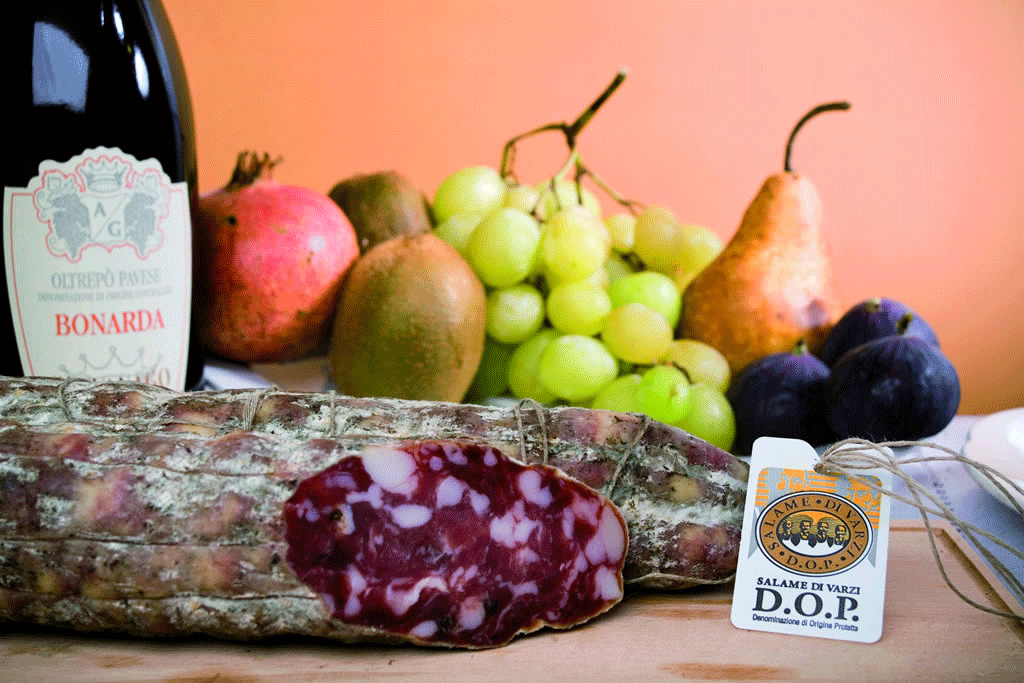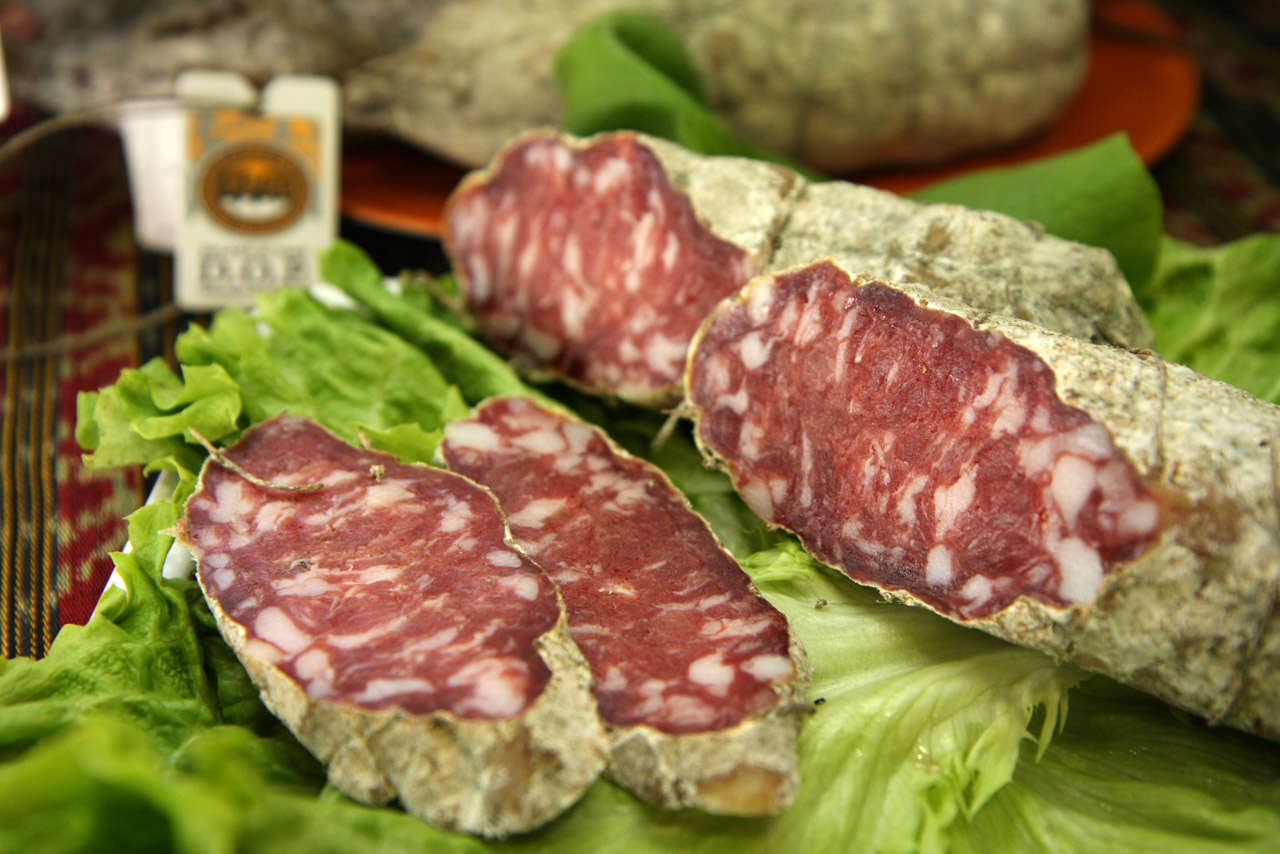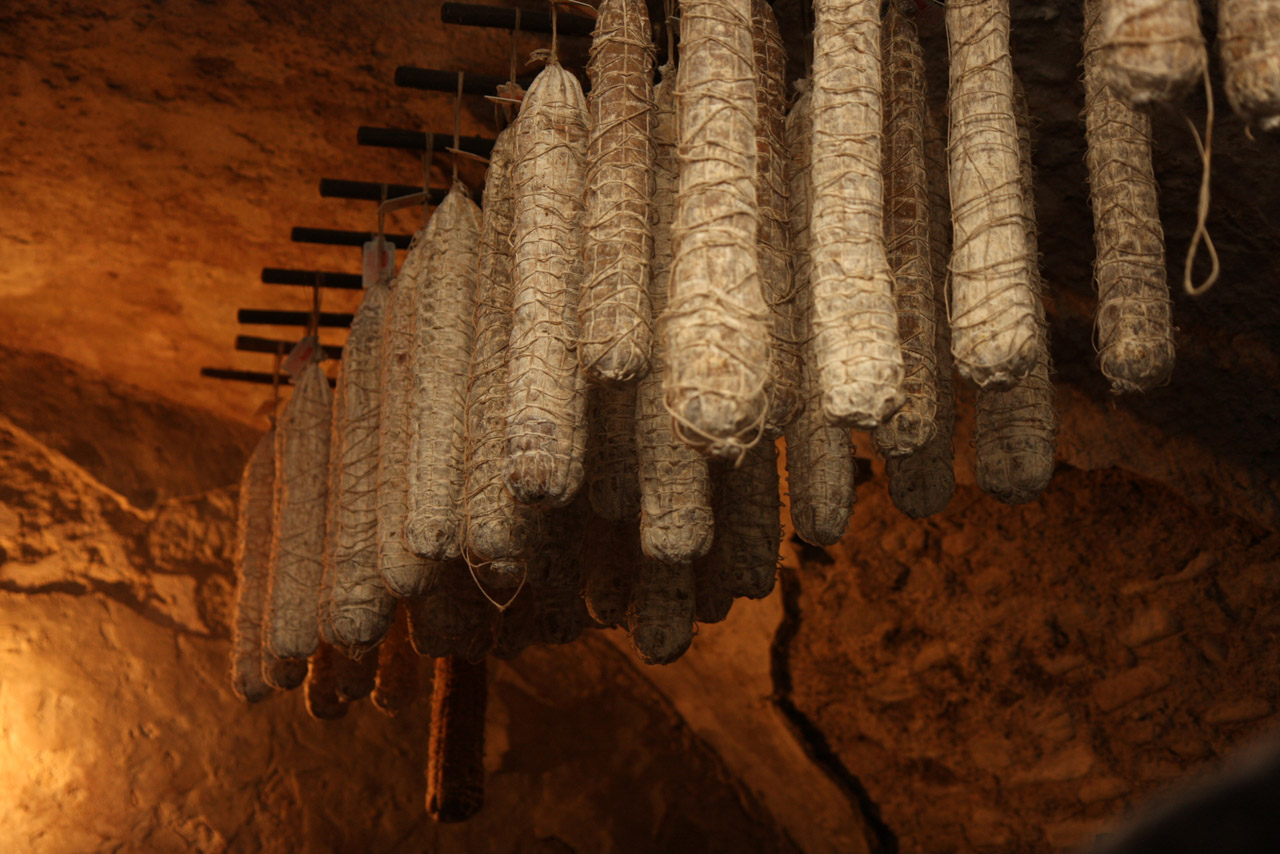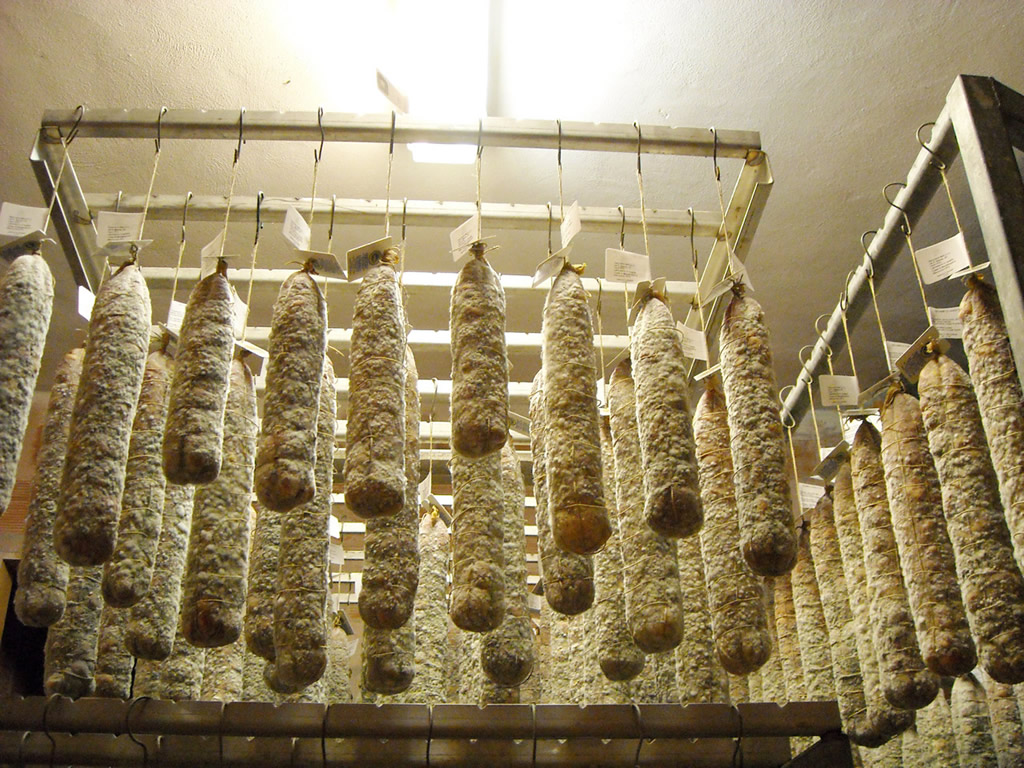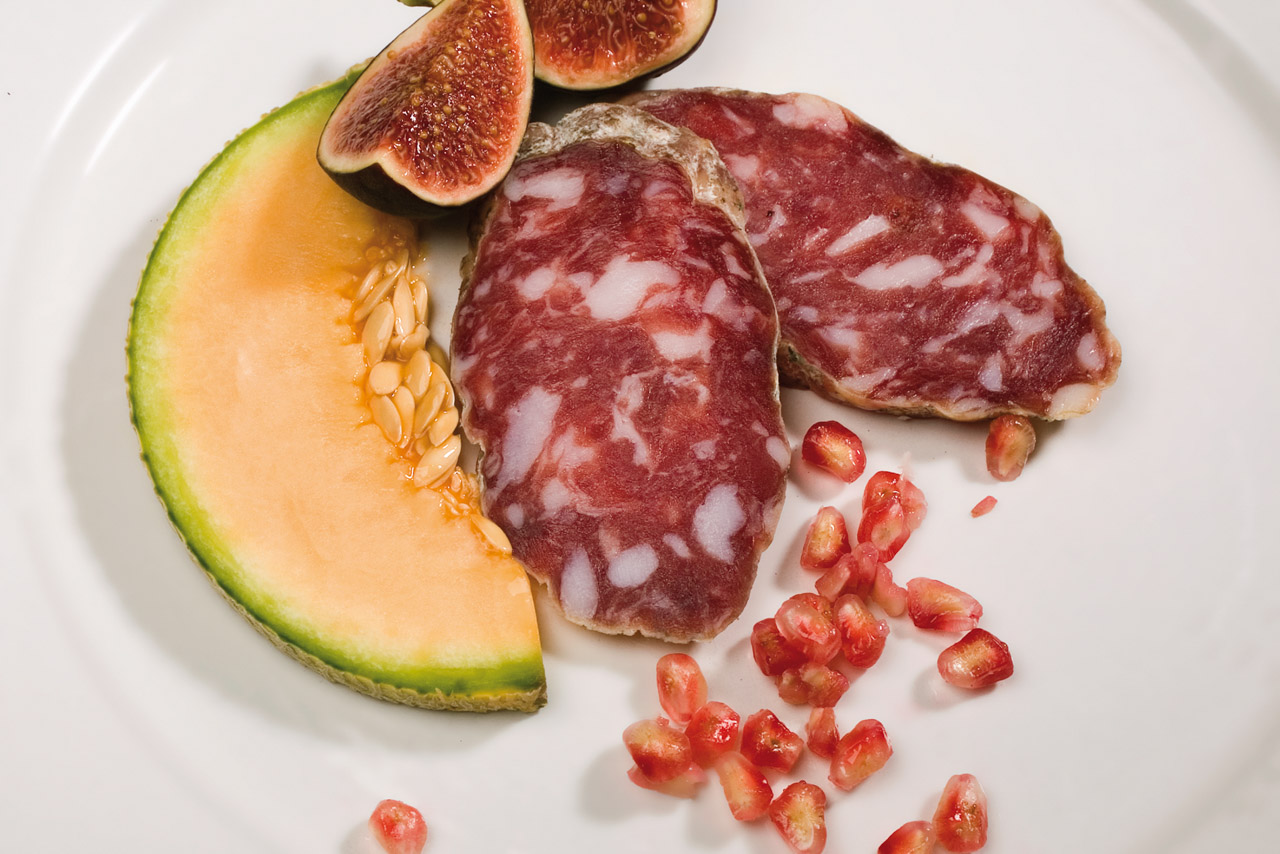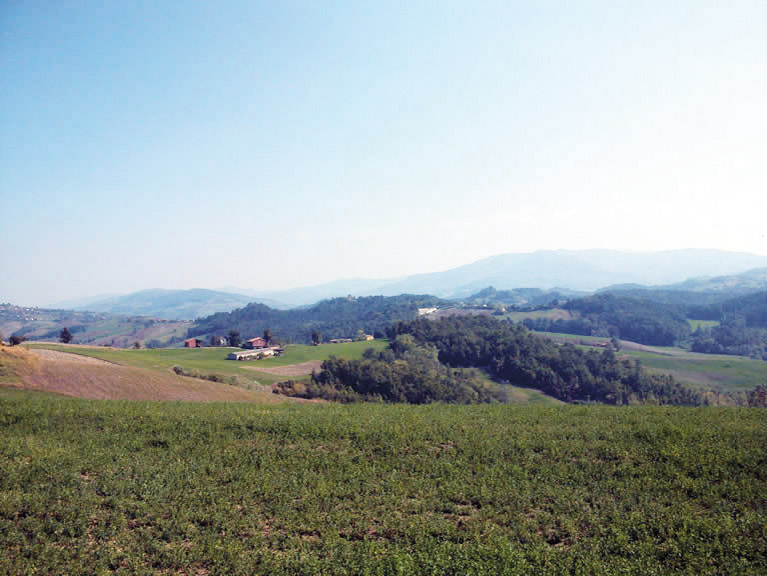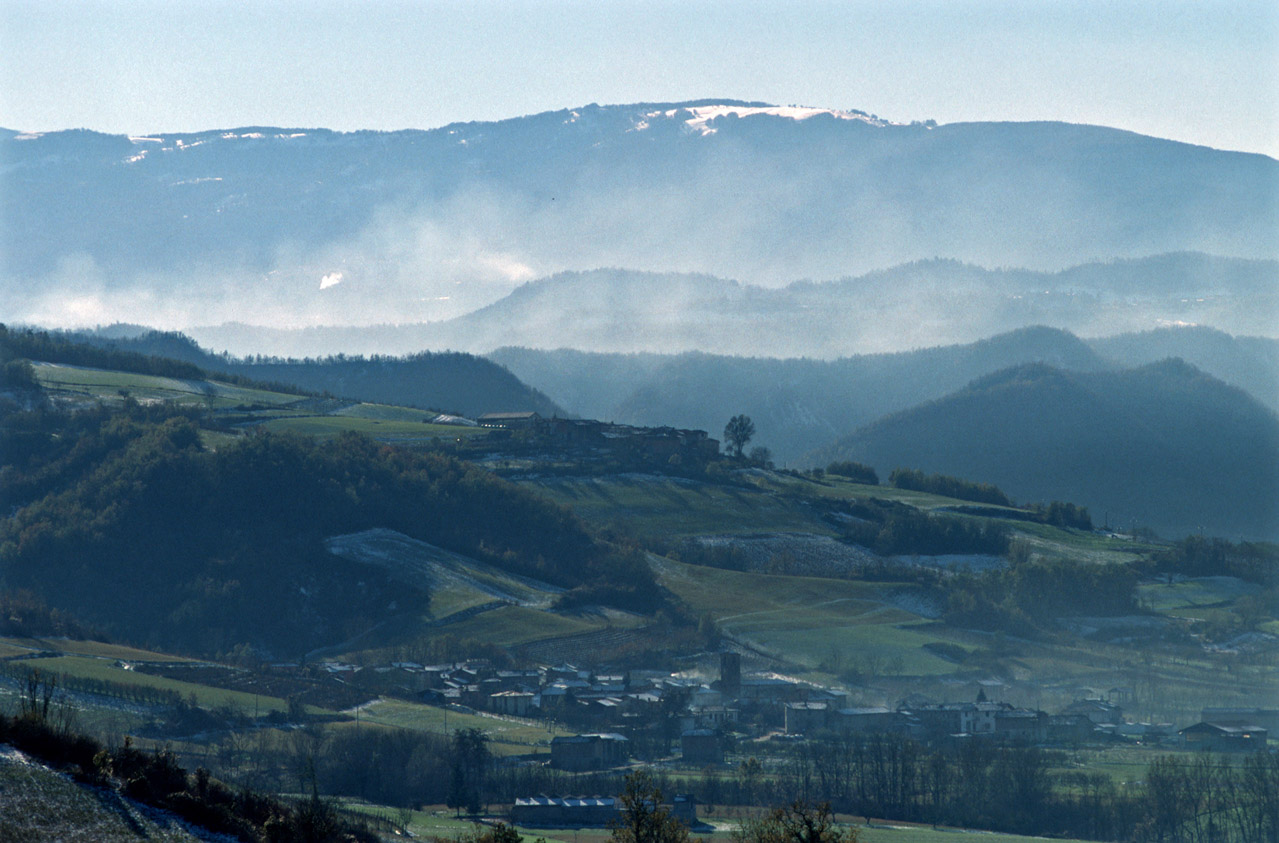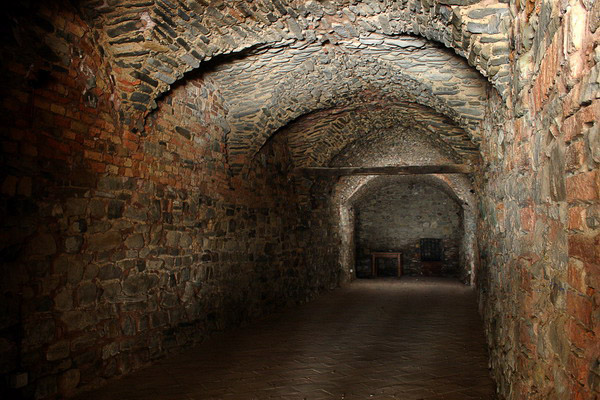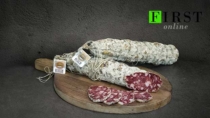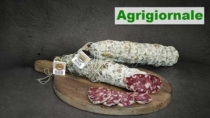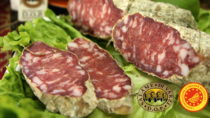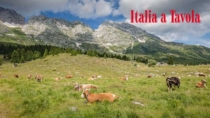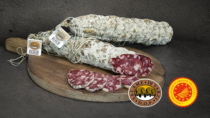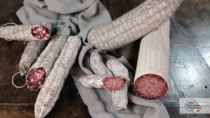Description
Salame di Varzi PDO is a stuffed, coarse-grain charcuterie product, obtained through the processing of lean and fatty meat from animals that are certified as Italian heavy pigs.
Production Area
The production area of Salame di Varzi PDO is within the territory of 15 municipalities in the mountain area of Oltrepò Pavese in the Province of Pavia, in the Lombardy region. The pigs used for production are born, reared and slaughtered in the following regions: Lombardy, Piedmont and Emilia-Romagna.
Production Method
The following selected cuts of lean meat are: shoulder, thigh, loin, fillet and coppa, cleaned of sinews and fats. The fat used is taken exclusively from the cheek, butt, belly, loin or lard. A maximum of 30% fat can be added for every 100 kg of lean cuts. The meat is minced in mincers with holes with a diameter of no less than 12 mm; it is then seasoned with a salting mixture of sea salt, pepper, and an infusion of garlic in filtered red wine. The salami paste is inserted into a natural pig casing, perforated and tied with string to create a tight mesh net. Salamis with a diameter of up to 50 mm and a maximum weight of 0.5 kg can be tied with a single string instead of a net. Drying is an important procedure because it initiates the natural process of slow acidification and successively dehydration; it lasts for 7-8 days. Curing takes place in the characteristic and ancient Varzi cellars. This process lasts for between 45-180 days, depending on the format of the product.
Appearance and Flavour
Salame di Varzi PDO has a cylindrical shape and weighs from 100 g to 2 kg and over. The slice is bright red, broken up by the white of the fat. It has a sweet delicate flavour, with a characteristic and fragrant aroma that is influenced by the length of time the product was cured for.
History
Salame di Varzi PDO has ancient origins. It seems that the Longobards diffused the technique of stuffing pig casings with pork, which up until that time was unknown. This nomadic population needed a product that could be preserved for a long period of time. In the 13th century, the Malaspina marquises, undisputed lords of this area, served it to their guests as an exceptionally delectable dish. Later, merchants took this delicious salami to the markets around Europe, using the salt road that connected the Padan Plain to the sea. It is also certain, as well as documented, that over the following centuries this salami was part of humble peasants’ frugal meals.
Gastronomy
If bought sliced, Salame di Varzi PDO must be kept in the refrigerator in a sealed packet and eaten as soon as possible. It is best to slice it shortly before serving. As tradition dictates, the cut of the slice must be slanting, “the shape of a clarinet beak”, in order to obtain a characteristic ‘not round’ slice of the right thickness, that is, not too thin or too thick. It can be eaten on its own or with vegetables conserved in oil, cheeses and fresh fruit, and it pairs nicely with sparkling red wines and spumante.
Marketing
The product is marketed as Salame di Varzi PDO. Based on the curing process and its diameter, it is sold in the following typologies: Filzetta, Filzettone, Sottocrespone a Budello Semplice, Cucito a Budello Doppio and Torto or Salametto. It is also sold as individual pieces, vacuum-packed or in modified atmosphere packaging, whole, in pieces or sliced.
Distinctive Features
The characteristics of Salame di Varzi PDO are given to the micro-climate of the production area. The presence of the Staffora river and the combination of the sea winds from the nearby Liguria region and the cool air currents that blow into the valley from the surrounding mountains, create ideal conditions for the curing of salamis.



